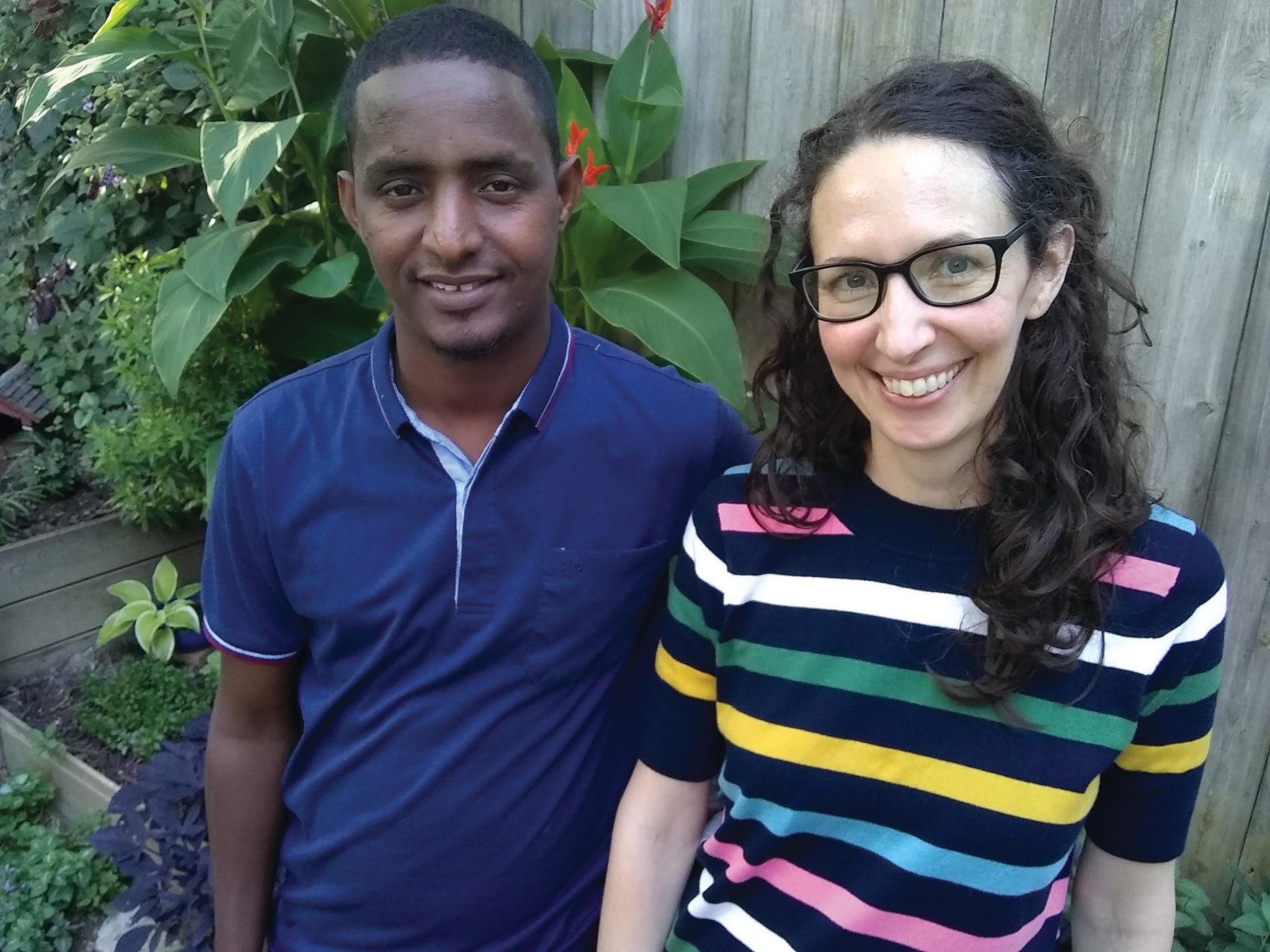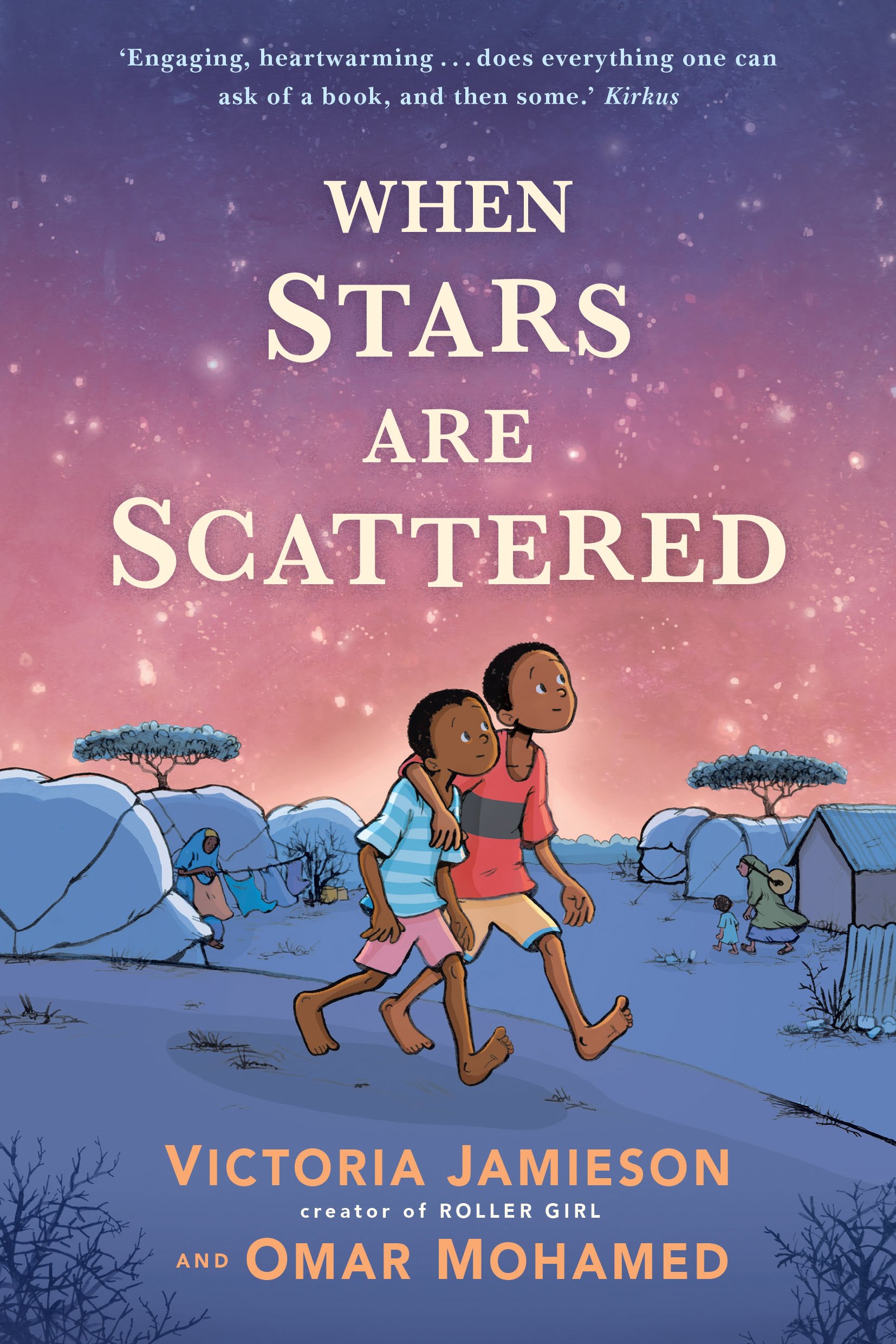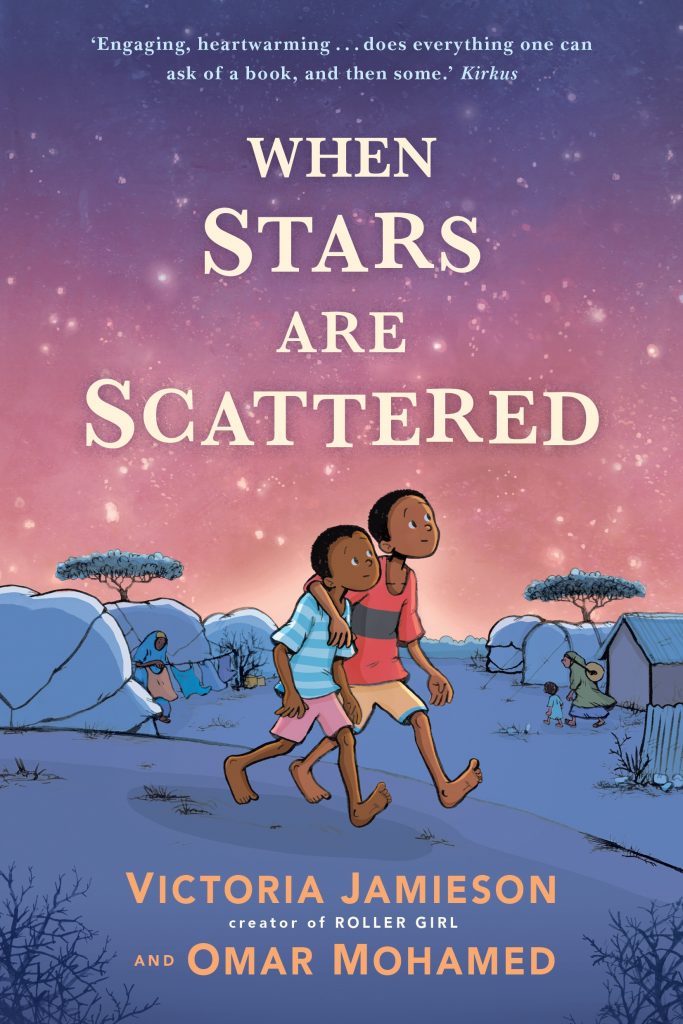We love this heart-wrenching story about life in a Kenyan refugee camp, so it’s an honour to welcome Victoria Jamieson and Omar Mohamed, creators of When Stars Are Scattered, into The Reading Realm to talk to Richard Ruddick about this special story! You can also head on over to our Twitter page for a fantastic giveaway!

Without giving too much away, can you tell us about When Stars Are Scattered?
OMAR: This book is based on my life story. I was born in Somalia, and at the age of four I fled with my brother, Hassan, to Dadaab refugee camp in Kenya. Despite the difficulties of life at the camp, I completed primary and secondary schools in Dadaab.
VICTORIA: I write and draw graphic novels for middle grade readers, so most of this book focuses on Omar’s daily life as a child and a pre-teen. As a child, I was always interested in how other kids lived around the world, and this book is an intimate look at the daily life of a child living in a refugee camp.
How did the idea to collaborate and create this book come about?
OMAR: I have always wanted to write a book to educate others about my experience as a refugee. I had already started drafting my story when I met Victoria. We met when Victoria visited Church World Service, the organization I work for that is dedicated to showing welcome to refugees, immigrants, asylum-seekers and other uprooted people within the United States, who are seeking safety and the opportunity to rebuild their lives. I was introduced to her by my co-worker who was showing her around the office. After the introduction, my co-worker told Victoria how I always wanted to write a book. The minute I first met with Vicki, I had confidence in sharing my story with her.
VICTORIA: I had been volunteering with a resettlement agency in my local community, and through this experience I was able to meet many new people and to hear their stories and learn more about their experiences. I began thinking about how a graphic novel might work to bring some of these stories to a wider audience, but the pieces didn’t come together until I moved to a new state and met Omar.
The story lends itself brilliantly to the graphic novel format and reminded me of Maus in regards to how well the imagery helped support the story. Was it always supposed to be a graphic novel or was it something that over time became the best option?
OMAR: I had envisioned the book as one for adults. I didn’t have much experience with children’s books or graphic novels when I first met Victoria.
VICTORIA: I seem to think in graphic novel format, so I tend to approach every story as if it’s a graphic novel! I find the combination of words and pictures so effective in telling a story. For Omar’s story in particular, as an American I was limited in my imagination by my life experiences. Seeing illustrations of the tents, schools, and landscapes of Dadaab can help bring these places to life for readers who have never experienced life in a refugee camp.

I was personally very moved by the book and it really helped me to improve my understanding of how refugee camps work and operate – to call it eye opening would be an understatement. Was your intention to try and raise awareness by writing the story or was it to write the story and hope people used it as inspiration to find out more about refugees?
OMAR: I hope that my story will inspire readers to always persevere. I hope readers gain an understanding of how no one would ever want to leave their country unless circumstances force them to leave. Empowering and supporting refugees is key to helping them succeed not only in the camps but also in their new communities. I hope readers will get to know their neighbours, even if they have different clothing than you or speak with a different accent than you. One kind action can have a huge influence in another’s life.
VICTORIA: I try to avoid having a “message” when I make a book, and instead focus on telling a compelling story. Having said that, I do hope that readers who connect with Omar’s story will find compassion and empathy for those who have been displaced from their homes. I also hope readers will visit Omar’s website for his non-profit organization, Refugee Strong. There are many ways young people can become involved in empowering refugees abroad or right in your own communities.
Everyone I’ve spoken to adores the book and has found it hugely enlightening. Will you be pursuing opportunities to write about more true life stories and events?
OMAR: I am considering continuing my story as a book for adults. Many details were left out of this version that could be included in an adult version.
VICTORIA: It was a wonderful experience writing this book with Omar, and I am honoured he chose to share his story with me. I would indeed pursue this type of opportunity in the future!
For many people, graphic novels are often associated with superheroes but lots of thought-provoking and challenging stories are being made as graphic novels. What is it about the format that allows these stories to be told so effectively? Why do they resonate so much with the reader as a graphic novel?
VICTORIA: I find graphic novels to be very intimate reading experiences. We’re invited into characters’ homes, we’re welcome to peek into their living rooms, their schools, and their lives. As a creator, I love that I don’t have to write everything out in words; I can draw how a character is feeling and leave the reader to draw their own conclusions. Reading a graphic novel is a stitching together of what is said in the words and what is said in the pictures, and the result is an experience that is unique to each reader.
Recently in Britain there has been a lot of controversy surrounding cultural insensitivity and outdated stereotypes being represented prolifically in some of the most popular books. How important do you think the role of books is in regards to teaching readers about the world? How can we progress to make more titles like yours available, rather than the culturally inappropriate ones which are being mass produced and consumed?
OMAR: I wanted to tell my story because I wanted to be a voice for voiceless. Mine is only one story. According to the United Nations, there are nearly 80 million people forcibly displaced from their homes. Every person has a story, and many stories are more difficult than my own. It is important to listen to these stories, because any one of us could become a refugee.
VICTORIA: As a reader and as a parent I take great care to read and share books by authors and illustrators of diverse backgrounds. As a co-author of this book, writing about a culture and a life that was not my own, I focused my attention on listening to Omar’s story. This is Omar’s story, and I tried to represent his memories as accurately as possible. Omar and I were in constant contact throughout the creation of this book to ensure the text and drawings were accurate, and we consulted many former and current residents of Dadaab for their feedback as well. Creating books for children is a responsibility I take very seriously. It takes diligence from everyone involved: creators, publishers, reviewers, educators, and caregivers, to ensure we are not sharing books containing harmful, outdated stereotypes that will hurt our kids.


